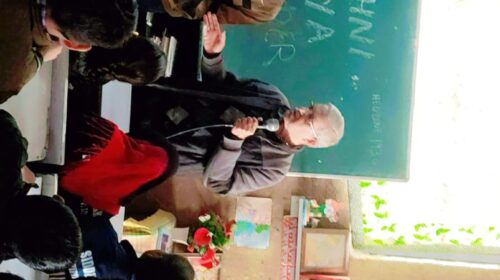Biden: Russian threat to invade Ukraine still ‘very high’
Fears of a new war in Europe resurged Thursday as U.S. President Joe Biden warned that Russia could invade Ukraine within days, and violence spiked in a long-running standoff in eastern Ukraine that some worried could provide the spark for wider conflict.
World dignitaries raced for solutions, but suspicions between East and West only seemed to grow, as NATO allies rejected Russian assertions it was pulling back troops from exercises that had fueled fears of an attack. Russia is believed to have built up some 150,000 military forces around Ukraine’s borders.
Concerns escalated in the West over what exactly Russia is doing with those troops, which included an estimated 60% of Russia’s overall ground forces. The Kremlin insists it has no plans to invade, but it has long considered Ukraine part of its sphere of influence and NATO’s eastward expansion an existential threat.
The U.S. government issued some of its starkest, most detailed warnings yet about what could happen next.
Speaking at the U.N. Security Council, U.S. Secretary of State Antony Blinken revealed some conclusions of U.S. intelligence in a strategy that the U.S. and Britain have hoped will expose and pre-empt any invasion planning. The U.S. has declined to reveal much of the evidence underlying its claims.
He told the diplomats that a sudden, seemingly violent event staged by Russia to justify invasion would kick it off. Blinken mentioned a so-called terrorist bombing inside Russia, a staged drone strike, a fake, even a real attack using chemical weapons.
The assault would open with cyberattacks, along with missiles and bombs across Ukraine, he said. Painting the U.S. picture further, Blinken described the entry of Russian troops, advancing on Kyiv, a city of nearly 3 million, and other key targets.
U.S. intelligence indicated Russia also would target specific groups of Ukrainians, Blinken said, again without giving details.
In an implicit nod to Secretary of State Colin Powell’s appearance before the Security Council in 2003, when he cited unsubstantiated and false U.S. intelligence to justify the U.S. invasion of Iraq, Blinken added: Let me be clear. I am here today not to start a war, but to prevent one.
Biden’s own comments on the Russian threat were unusually dire.
Speaking at the White House, he said Washington saw no signs of a promised Russian withdrawal, and said the invasion threat remains very high because Russia has moved more troops toward the border with Ukraine instead of pulling them back.
Every indication we have is they’re prepared to go into Ukraine, attack Ukraine,” Biden told reporters. He said the U.S. has reason to believe that Russia is engaged in a false flag operation to have an excuse to go in,” but did not provide details.
The White House said Biden planned to speak by phone Friday with trans-Atlantic leaders about Russia’s military buildup and continued efforts at deterrence and diplomacy.
U.S. and European officials were on high alert for any Russian attempts to create a pretext for invasion, according to a Western official familiar with intelligence findings. Ukrainian government officials shared intelligence with allies that suggested the Russians might try to shell the Luhansk area in the disputed Donbas region on Friday morning as part of an effort to create a false reason to take military action, according to the official who was not authorized to comment publicly.
Renewed fear of an invasion put global financial markets on edge. The Dow Jones Industrial Average fell nearly 600 points, or 1.7%. More than 85% of the stocks in the benchmark S&P 500 were in the red.
Even without an attack, the sustained Russian pressure on Ukraine has further hobbled its shaky economy and left an entire nation under constant strain. Eastern Ukraine already has been the site of fighting since 2014 that has killed 14,000, and tensions soared again Thursday.
Separatist authorities in the Luhansk region reported an increase in Ukrainian government shelling along the tense line of contact. Separatist official Rodion Miroshnik said rebel forces returned fire.
Ukraine disputed the claim, saying separatists had shelled its forces but they didn’t fire back. The Ukrainian military command said shells hit a kindergarten in Stanytsia Luhanska, wounding two teachers, and cut power to half the town.
The head of the monitoring mission for the Organization for Security and Cooperation in Europe, Yasar Halit Cevik, said it reported 500 explosions along the contact line from Wednesday evening to Thursday. Cevik told the Security Council the tensions then appeared to ease, with about 30 blasts reported.
Ukrainian President Volodymyr Zelenskyy tweeted that the kindergarten shelling by pro-Russian forces is a big provocation.
Kremlin spokesman Dmitry Peskov countered with the same: We have repeatedly warned that the excessive concentration of Ukrainian armed forces in the immediate vicinity of the line of demarcation, coupled with possible provocations, could pose a terrible danger.
A 2015 deal brokered by France and Germany helped end the worst of the fighting, but regular skirmishes have continued and a political settlement has stalled.





